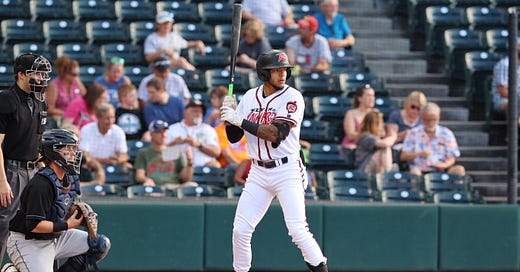Photo Credit: Mick Anders | Richmond Flying Squirrels
So far, in this year’s Top 50, we’ve seen:
One hobby horse that I feel like I beat every year in these lists is that I don’t like rewarding players (ie, pushing up the list) simply because we haven’t seen them fail yet. Sometimes, succeeding at levels that aren’t capable of exploiting a player’s weakness doesn’t mean that the skills are going to continue to play as well higher up the chain. And sometimes reaching a level where weaknesses are exploited doesn’t mean that a player has arrived at the end of their promise. It can be the pathway to new growth.
There are reasons why the different levels exist. They all have different things to teach a player. And failure can be a greater tutor than success. These are all truisms that I have heard over and over in my quest to try to gain a greater understanding of player development — and they are phrases that I’ve come to put a lot of value in.
That doesn’t mean I don’t blow teenagers with low level success on their resume up the charts. I do — every year! And I have this year in particular (as we’ll see later on in this series). But it is still an element of these lists that I struggle with every year, and something I particularly bug the scouts I’m in contact with to help me puzzle out.
Today’s section of the Top 50 includes three players with very similar profiles at three very different places in their careers. There’s a reason they’re all here together. And we’re going to wrestle in depth with how to order them in relation to each other. It’s tough! But I suppose it’s the fun of lining guys up and ordering them. At some point, you have to say “I want this guy before this guy.”
Let’s get into it…
Keep reading with a 7-day free trial
Subscribe to There R Giants to keep reading this post and get 7 days of free access to the full post archives.




